
-
![Hastings Garden, Malta]() Provided by: Jean-Pierre Dalbéra/cc by 2.0/Flickr
Provided by: Jean-Pierre Dalbéra/cc by 2.0/Flickr

Our travel guides are free to read and explore online. If you want to get your own copy, the full travel guide for this destination is available to you offline* to bring along anywhere or print for your trip.
*this will be downloaded as a PDF.Price
€4,95
Hastings Garden
The guide was updated:Just outside the city gate of Valletta lies the Hastings public garden. From here majestic views over Sliema, Floriana, and Manoel Island unfold. The name of the garden comes from the Marquis of Hastings, who was a governor of Malta. He died in 1827 and is buried in the garden.
Useful Information
- Address: Hastings Garden, Valletta
Digital Travel Guide Download
Our travel guides are free to read and explore online. If you want to get your own copy, the full travel guide for this destination is available to you offline* to bring along anywhere or print for your trip.
*this will be downloaded as a PDF.Price
€4,95

Valletta, the capital of Malta, was ingeniously constructed in the 16th century by the Knights of St John. Exuding baroque elegance, it is rightfully hailed as an open-air museum due to the number of historic buildings concentrated in the area like St John’s Co-Cathedral and the Grand Harbour, masterfully crafted by the Knights. Within a mere 900m x 630m area, over 25 churches grace the landscape. This remarkable city is an esteemed UNESCO World Heritage Site, a testament to its cultural significance and architectural splendour.
Read more
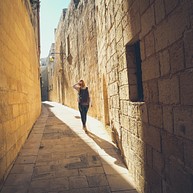
Mdina
Mdina, the old capital of Malta, is a typical medieval town situated on one of the highest hills of the island. Known as the "Silent City", Mdina is one of the few remaining fortified Renaissance cities in Europe. Climb to the top for magnificent views of the island.
Read more

Wied iż-Żurrieq
Wied iż-Żurrieq is a small village situated on the southern coast of Malta. Here visitors can have a swim or visit the Blue Grotto and the surrounding coastline on a trip on the "dghajsa", a traditional Maltese fishing boat. The Blue Grotto is famous for the clarity of the water and the brilliant colours around the rocks and in the caves.
Read more
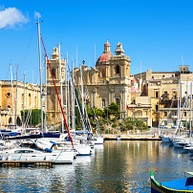
Three Cities of Cottonera
Across the Grand Harbour, to the south of Valletta, are the historic fortified towns of Vittoriosa, Cospicua and Senglea, commonly referred to as the three cities of Cottonera. If you only have time for one of them, Vittoriosa is the one most worth a visit. Here you'll find Fort St Angelo, the Inquisitor's Palace, and the Vittoriosa waterfront, which was refurbished in the early 2000s to once again reach up to its former glory.
Read more

Marsaxlokk
Marsaxlokk is the main fishing village of Malta, known for its famous fish market held on the docks every Sunday morning. It's a true spectacle and something you shouldn't miss. It isn't just fish that's on sale here — souvenirs and handicrafts are up for grabs at decent prices too. There are, naturally, a multitude of seafood restaurants in the vicinity.
Read more

Megalithic Temples
The remains of temples erected in the fourth and third millennium B.C. are a unique sighting. Stone idols, animal representations carved in relief, stone tablets, altars and screens decorated with spirals and other patterns enhance the attraction of these magnificent sanctuaries. Some of the places worth a visit are Hagar Qim in Qrendi, Tarxien Temples in Tarxien and Ggantija in Gozo.
Read more
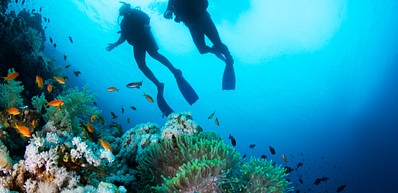
Diving
Malta is famous for its clear blue water and the perfect conditions for diving. Plenty of reefs, caves, and remains of old shipwrecks make it an unforgettable experience. Make use of the chance to go on a boat cruise and head towards one of these spots.
Read more

Gozo
The sister island, Gozo, is well worth a visit on its own. Hire a car or book one-of-the-day jeep safari trips that are offered by multiple tour operators. Upon disembarking, you'll immediately notice the difference between the islands. Gozo has a more serene atmosphere and is packed with lush farms. While you're here, don't miss the Citadel in Victoria, the Saltpans, the Inland Sea, and the cliff where the Azure Window (formerly one of the most famous landmarks of Malta) once stood before its collapse in early 2017.
Read more
Do & See
Ħal Saflieni Hypogeum
The Hypogeum of Ħal Saflieni is a Neolithic subterranean structure, accidentally discovered in 1902. Over 500 square metres of chambers, halls, and passages date back to the period between 3600 and 2500 BC. To conserve the stone, precaution must be taken, and the number of visitors per day is therefore limited.
Read more

Mediterraneo Marine Park
Just a short ride from St Julian's is the Mediterraneo Marine Park, a fun attraction for both children and adults. The park offers shows with sea lions and the chance to swim with dolphins. Snakes, turtles, frogs, and spiders — among others — also call the park home.
Read more
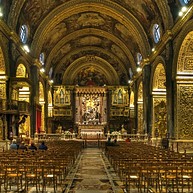
St John's Co-Cathedral
St John's Co-Cathedral is known as the home of knights and Grand Masters of Malta. The cathedral's golden, elaborate interior and Baroque exterior count as one of Europe's finest. The adjacent museum contains works of art, among which is "The Beheading of St John the Baptist" by Caravaggio.
Read more

Hastings Garden
Just outside the city gate of Valletta lies the Hastings public garden. From here majestic views over Sliema, Floriana, and Manoel Island unfold. The name of the garden comes from the Marquis of Hastings, who was a governor of Malta. He died in 1827 and is buried in the garden.
Read more

Teatru Manoel
Known simply as “The Manoel”, Teatru Manoel is a beautiful theatre and an important performing arts venue in Malta. It was named after António Manoel de Vilhena, Grand Master of the Knights Hospitaller, who sponsored the construction, which was done in an incredibly short time span of 10 months.
Read more

Fort Rinella
Fort Rinella is a Victorian fort, built by the British to support Malta in the resistance against Italy. To make it extra safe, a 100-ton gun, designed to be the world's biggest, was placed at its entry (fortunately, never to be used). Do not miss the on-site museum to learn more about the military history of Malta.
Read more
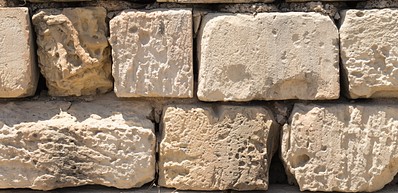
Limestone Heritage
The name Malta comes from the Italian word "melita" or "honey". The reason for that is quite banal — when sailors first saw Malta, the islands' limestone silhouette appeared dark yellow, similar to the colour of honey. The Limestone Heritage, Park and Gardens is a former quarry, where you can explore the island's limestone history through its exhibits and sculpting demonstrations.
Read more

Lascaris War Rooms
The hidden Lascaris War Rooms were Malta's best-kept secret during World War II. British troops used the underground tunnels and chambers as their headquarters to coordinate their fight against the Axis powers. Pay a visit to this fascinating museum to gain deep historical insight into Malta's role in WWII.
Read more


